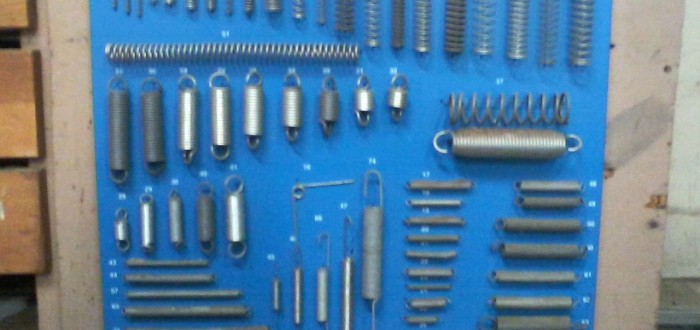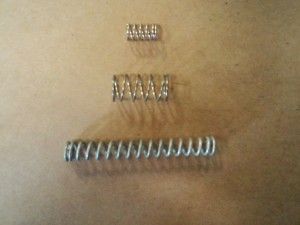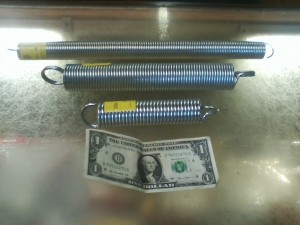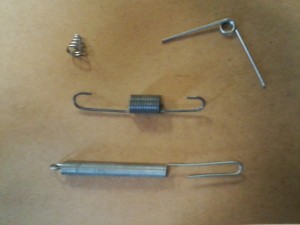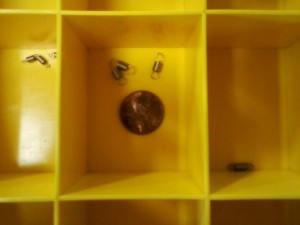This weekend happens to be the end of Daylight Savings Time, and I’ve had the old “Spring forward / Fall back” saying going on in my head all week. While it has nothing to do with the seasons, I figured this week’s topic should be springs. I haven’t talked about springs yet, but we sell them at the store, and they’re a common item that needs to be replaced when repairing something.
Springs are made of special wire, which is heat treated to make it hard and “springy”. Springs seem to last forever, but eventually they can break or occasionally loose their spring. Then the thing to do is to gather up the broken parts and make a trip to the hardware store to match them up to a new one. It can be difficult to match springs up exactly, as there are several variables involved. First is the type of spring, then the diameter of the wire used. Then there is the spring diameter itself and lastly the length. First we’ll cover the general types of springs.
The first kind most people think of is a spring with open coils that can be compressed by pushing on the ends. It is called, logically enough a compression spring. The opposite kind that is tight at rest, and is stretched by force is an extension spring. The last common kind has several wraps of wire ending in a straight end that sticks out at an angle. These resist forces against the straight end wires and are known as torsion springs.
There are also special types of all of these springs with different features. Some compression springs have ends that are wrapped flat and ground off. These are called die springs. Other compression springs are bigger on one end than the other, they are called conical springs. Extension springs always have some type of hook on the end to pull on, but some have long hooks on one or both ends. These are extended hook springs.
The diameter of the spring wire used to make the spring determines how much force is required to make the spring stretch. This is called spring rate. The diameter of the wrapped wire coil also has something to do with the spring rate, the smaller the coil, the stiffer the spring is. It also makes it more likely to fail, so use the biggest coil that will fit.
With all of these variables it is obvious that there is an almost infinite variety in the types of springs available. Sometimes you have to settle for a spring that is close to the original and can be made or modified to work. Compression springs that are too long can usually just be shortened. Spring wire is very hard, don’t ruin your diagonal cutters on them, they have to be ground off with a grinder (don’t ask me how I know this!). Extension springs can be shortened the same way, but you’ll have to create a new hook on one end. Small wire springs can have a new end hook created by just bending the wire, but heavier ones must have the end annealed (softened) with a torch so they can be bent. Extended hook springs can be hard to match up, but something that will work can often be fabricated by adding a link of wire or flat stock to the end that is too short. It will work the same way as the original, but it will just look a little different.
That’s about it with springs, just remember to bring you old one with you as we have many, many to choose from, at the Old Hardware Store…

